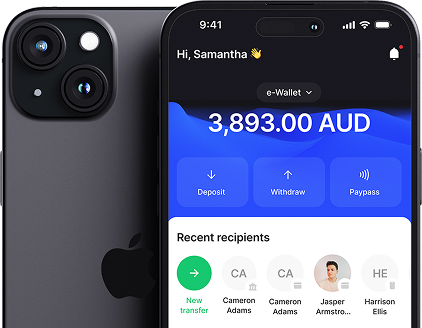Sending Money Overseas from Australia: Things to Know
30 March 2025

Rules when sending money overseas from Australia are important to understand. You also need to be aware of what happens at the other end of the transaction. There are various regulations for any given country you wish to send money to. It is always smart to find out as much information as you possibly can.
Implications of Sending Money Overseas to India
According to the ICICI Bank, any money sent to India, “Irrespective of the value of transfer, each remittance should be accompanied by a purpose of remittance/transfer”. This helps the Indian government prevent inward remittances that are intended for speculative and illegal activities. The ICICI Bank also says the following:
“Additionally, the beneficiary receiving inward remittance should seek a Foreign Inward Remittance Certificate/Statement (FIRC/FIRS) from beneficiary bank or converting/processing bank in India. It serves as proof of receipt and is helpful to establish the purpose of inward remittance, along with complete transaction details including remitter name & address, While filing your Income Tax Returns (ITR) in India. Banks will only issue FIRC/FIRS at the beneficiary’s request and a No Objection Certificate (NOC) will be provided by the converting/processing bank.”
Furthermore, you need to be very aware of the specific amount of tax you will pay on remittance. The government already imposed a 5% Tax Collection at Source (TCS) on foreign remittances to India, but they increased this rate to 20% in 2023. Although some exemptions exist, as explained by cleartax.in, you should be aware of how your money is affected when remitting to India.
Implications of Sending Money Overseas to Pakistan
Sending money to Pakistan is much easier than it once was. Since the addition of the Pakistan Remittance Initiative in 2009, things have changed drastically. The initiative is explained in the following terms:
“In order to provide for an ownership structure in Pakistan for remittance facilitation, State Bank of Pakistan, Ministry of Overseas Pakistanis and Ministry of Finance launched a joint initiative called Pakistan Remittance Initiative (PRI). This initiative shall take all necessary steps and actions to enhance the flow of remittances.”
It was once the case that many people sending money to Pakistan used unauthorised and unregulated methods in order to avoid paying exorbitant transfer fees. Naturally, unregulated channels of remittance come with serious risks to your money. You should only use authorised channels to send money to Pakistan from Australia, who are registered with the Australian Transaction Reports and Analysis Centre (AUSTRAC).
e-Pocket is one such example of a remittance service that makes sending money to Pakistan much easier than it once was. Previously, people used banks most commonly, but these often came with very high fees and lengthy processing times.
Additionally, according to taxsummaries.pwc.com: “Any foreign-source salary received by a resident individual is exempt from tax in Pakistan if the individual has paid foreign income tax in respect of that salary”.
Implications of Sending Money Overseas to Sri Lanka
When sending money to Sri Lanka, if you want the best value for money, you should always avoid using banks. They have significantly higher transfer fees and much poorer exchange rates than remittance companies. So if you want to save money on remittance, use remittance companies like e-Pocket.
If you’re looking for safety, you should only use companies registered with AUSTRAC.
Rumours have circulated in the past that Sri Lankan expatriates would have their remittances taxed. People believed that authorities would forcibly convert this money into Sri Lankan Rupees. In late 2022, this was denied by the Central Bank of Sri Lanka.
Implications of Sending Money Overseas to the Philippines
Overseas Filipino Workers (OFWs) pay taxes on income made in the country of work. They do not pay income taxes in the Philippines. In the Philippines, the government considers received remittances as income, so they tax it at the standard income tax rates, ranging from 5% to 33%. Additionally, recipients must properly report remittance income to avoid a 25% fine on the total remittance.
There are also no taxes when sending money to Ghana. Of course, be sure to do your own research to ensure you have the most up to date information. Additionally, you should keep in mind that exchange rates fluctuate and different companies charge different fees. Make yourself aware of all monetary implications before authorising a transaction.
Conclusion
We have taken you through a number of different examples of special considerations for sending money to different countries from Australia. It is important to remember that these laws vary from country to country. You should always make yourself aware of any rules and regulations regarding remittance. Apply this rule to any country you are planning to send money to. What are the exchange rates? What fees will I be paying? Are there tax implications?
To send money to the countries we have discussed in the blog, remit money with e-Pocket.




